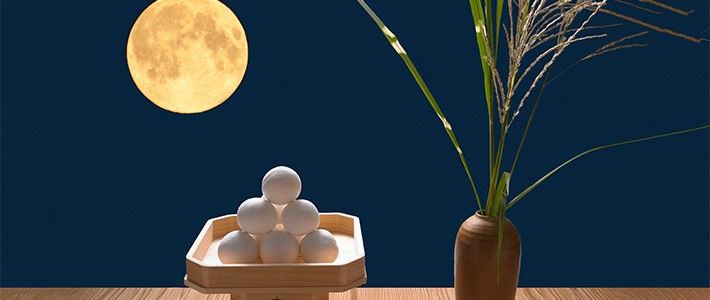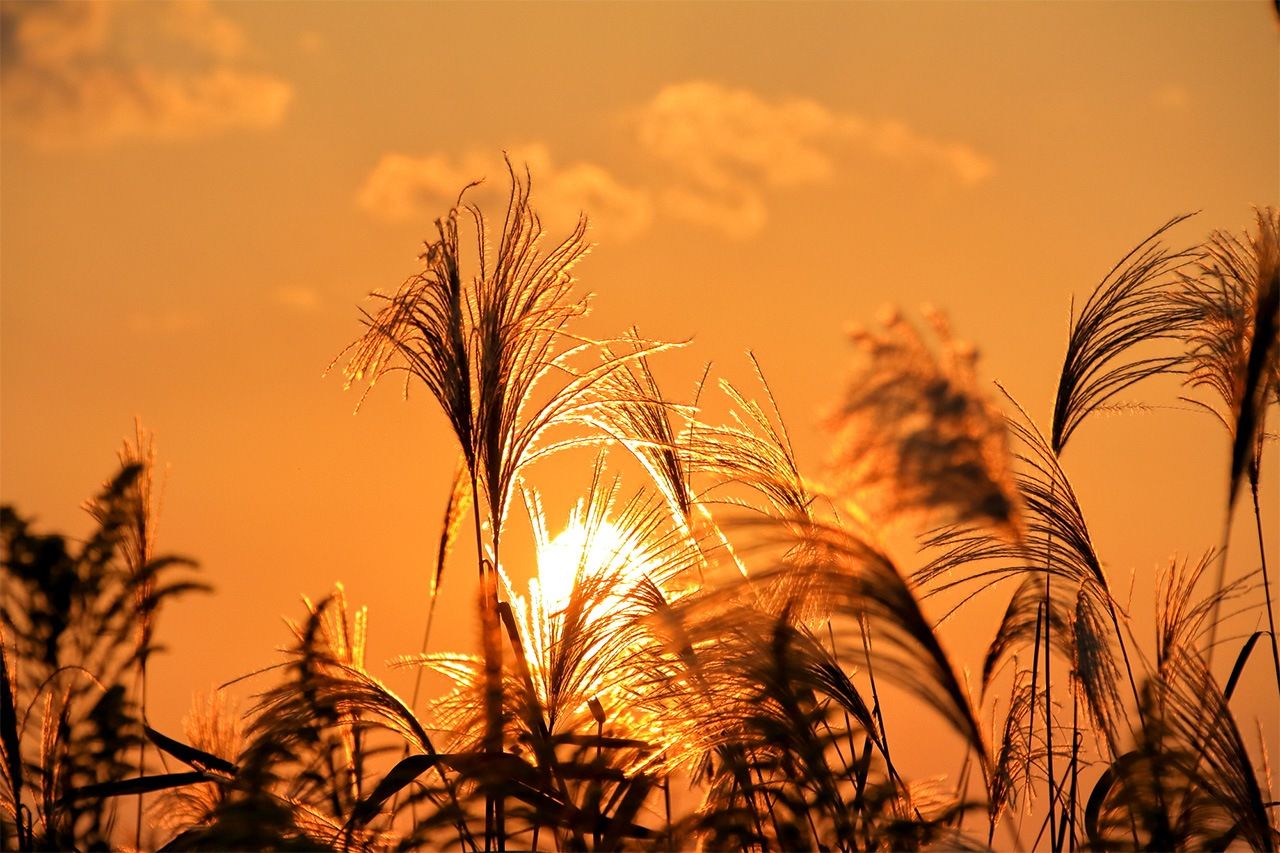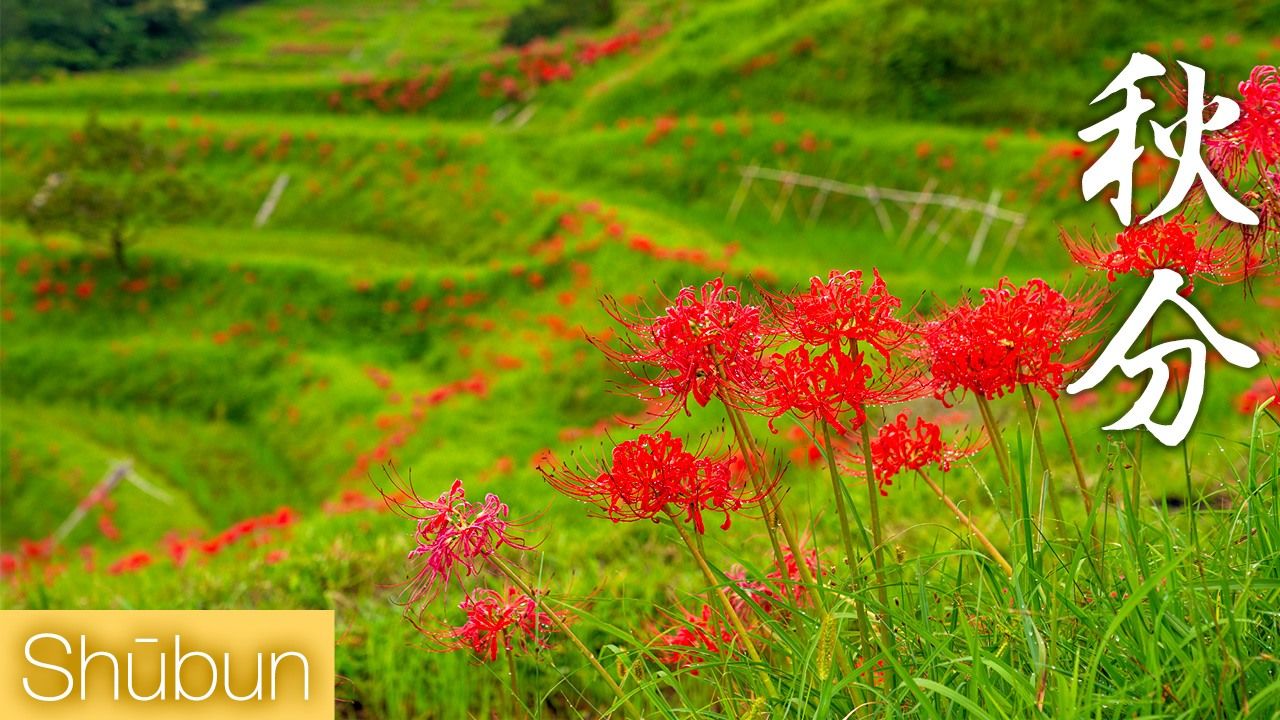
Shūbun (Autumn Equinox)
Culture Lifestyle History Environment- English
- 日本語
- 简体字
- 繁體字
- Français
- Español
- العربية
- Русский
Shūbun (Autumn Equinox) falls on approximately September 23 in the modern calendar. As at the spring equinox, the sun rises due east and sets due west, and day and night are the same length. People pay respects to ancestors at the Buddhist holiday of Higan around each of the equinoxes, but there is a stronger emphasis on the practice in autumn. The end of Higan is said to bring warmer spring or cooler autumn temperatures.
The dates for the 24 solar terms and the 72 kō (microseasons) are set by the National Astronomical Observatory of Japan, calculated from the position of the sun. The two equinoxes are national holidays in Japan, dedicated to the appreciation of nature.
This article will look at events and natural phenomena in the period roughly from September 23 to October 7.
Higanbana (Red Spider Lily)
Red spider lilies flower in autumn, coinciding with the Higan period when people visit ancestors’ graves, and are therefore commonly called higanbana (Higan flowers). The perennial flower is originally from China. They are also known as manjushage, a reference to heavenly flowers, transcribed from Sanskrit. Due to their poison, concentrated in the bulb, they are planted on embankments around fields to deter mice, moles, and other pests. As Higan approaches, the stalks emerge as though they had just been planted, producing six flowers about 10 centimeters in diameter before their leaves appear.
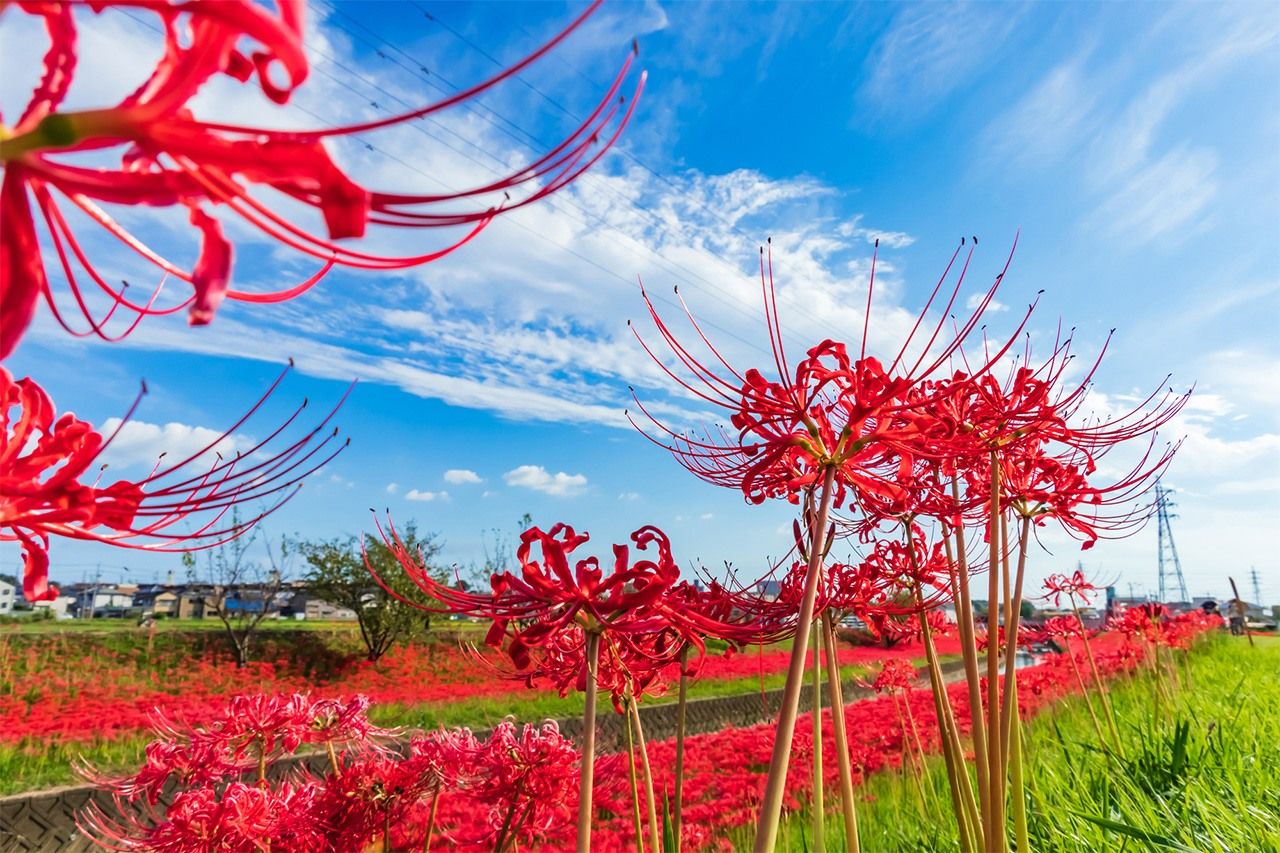
Higanbana (red spider lilies). (© Pixta)
Tsukimi (Moon Viewing)
The jūgoya or “fifteenth night” refers to the full moon on the fifteenth day of the eighth month in the traditional calendar, which was the most celebrated full moon of autumn. Its origins lie in the Chinese mid-autumn festival, during which families gather to enjoy and celebrate the full moon in a tradition since the Tang dynasty (618–907). It was introduced to Japan during the Heian period (794–1185), but was only celebrated among the aristocracy. It spread to the wider population early in the Edo period (1603–1868).
On the jūgoya, people set aside a special place for a display of seasonal produce such as taro, chestnuts, and persimmons along with rice dumplings to give thanks for the harvest. Pampas grass is also displayed because, as well as resembling rice ears, it is said to shelter the gods, and therefore acts as a charm against evil spirits.
Kinmokusei (Fragrant Olive)
Kinmokusei is renowned as one of the three great aromatic trees in Japan. When in bloom, the flowers exude a sweet fragrance that reminds us of the changing season. The dried flowers are used in golden osmanthus tea (gui hua cha), a popular Chinese tea.
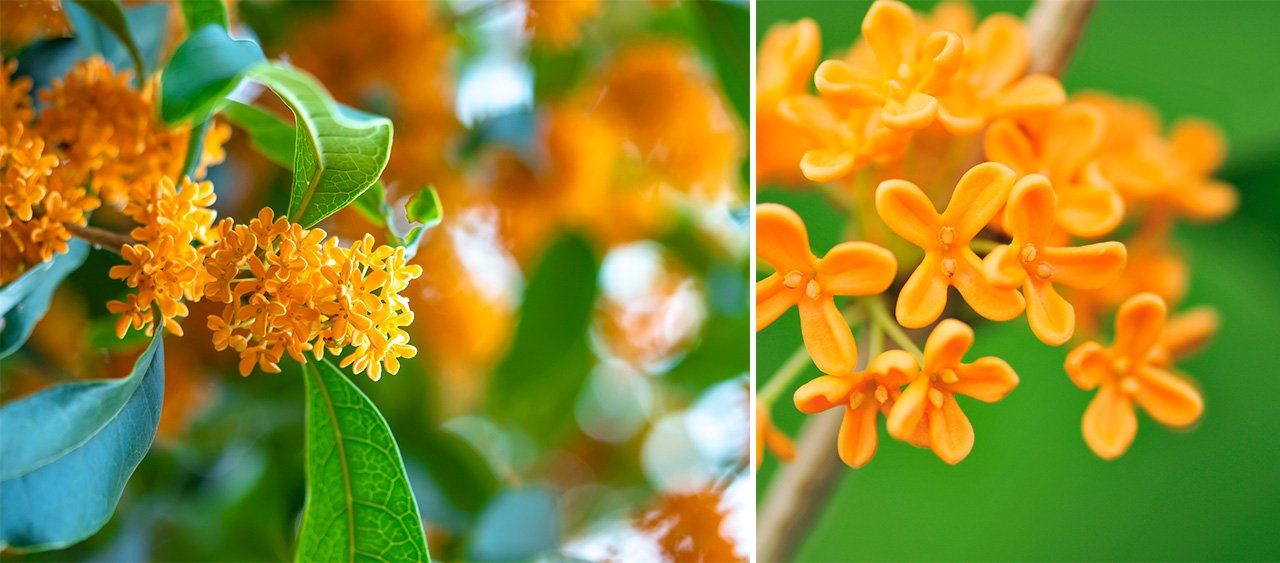
Kinmokusei (Fragrant Olive) (© Pixta)
Sanseki no Uta (Three Evening Poems)
The thirteen-century imperial anthology Shin kokin wakashū includes three famous poems about autumn evenings by Buddhist monks Saigyō (1118–1190) and Jakuren (1139–1202), and Fujiwara no Teika (1162–1241), who was one of the compilers of the collection.
Miwataseba
Hana mo momiji mo
Nakarikeri
Ura no tomaya no
Aki no yūgureLooking out to see
no flowers, no
crimson leaves—
a thatched hut on the shore
this autumn evening
In Fujiwara no Teika’s poem, rather than beautiful scenery, the poet sees only a fisherman’s hut, conveying the loneliness of the season.
Matsutake
Matsutake, a mushroom known for its distinctive aroma, has long been popular, and is even mentioned in the ancient Man’yōshū poetry collection. They grow at the base of the Japanese red pine, and are difficult to cultivate otherwise, making them a delicacy. In 2020, the International Union for Conservation of Nature designated matsutake as a vulnerable species, and it is becoming more expensive every year. They can be grilled, cooked in with steamed rice, steamed in an earthenware pot called dobinmushi, or used as an ingredient in clear suimono soup.

Matsutake (left) and matsutake steamed rice. (© Pixta)
Taro
The root vegetable taro was introduced into Japan during the Jōmon period (ca. 10,000–300 BC), predating rice cultivation. The parent or seed taro is surrounded by its children and grandchildren and the vegetable is therefore considered a symbol of abundant harvest and perpetuation of one’s family line. Taro are commonly stewed with meat, konnyaku, and soy sauce to make imoni, a popular dish in the Tōhoku region. Each September, the city of Yamagata holds Japan’s biggest imoni festival. A pot 6.5 meters in diameter and weighing four tons is used to cook the imoni, producing around 30,000 serves, attracting a large crowd.
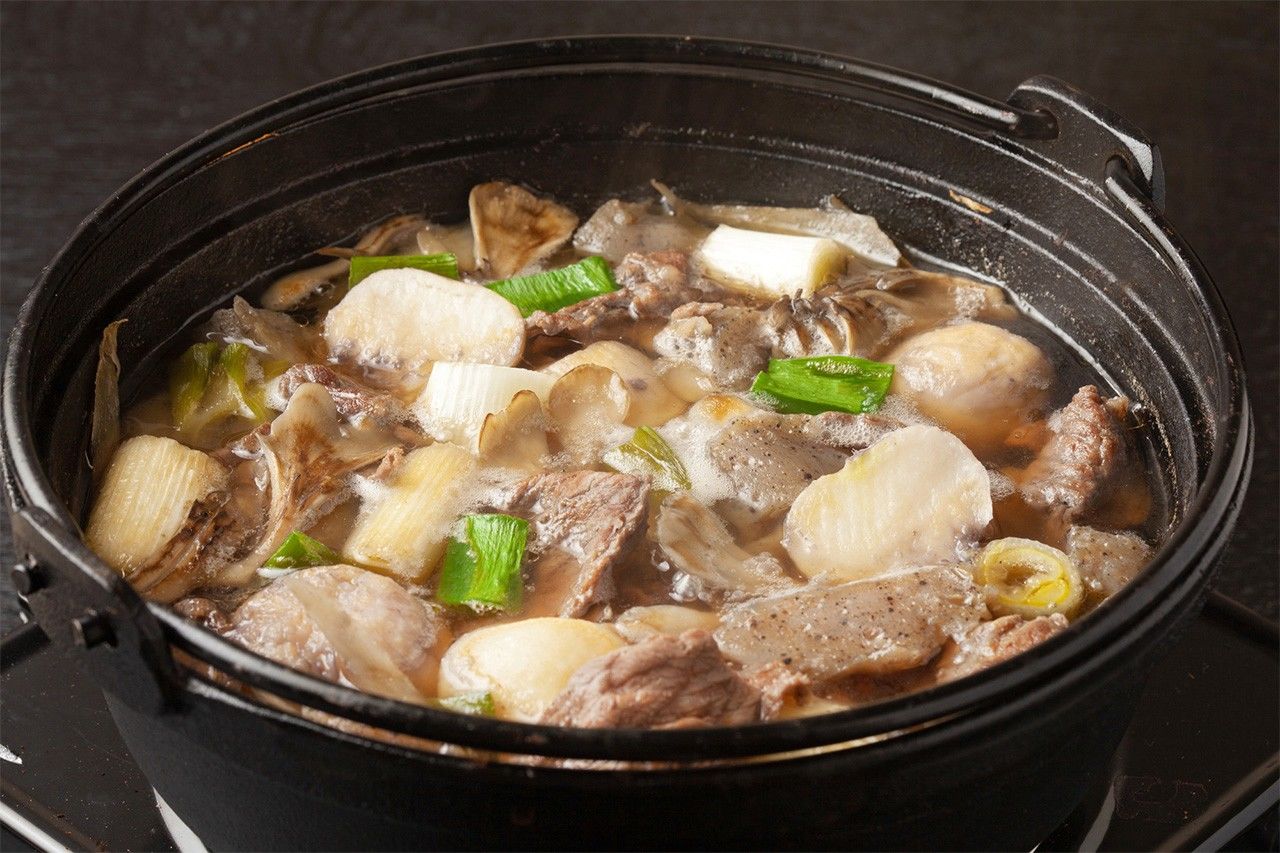
Soy sauce flavored imoni. (© Pixta)
Tōfu Day (October 2)
The Japan Tōfu Association designated October 2 as Tōfu Day, a play on the words for 10 (tō) and 2 (fu). There is a plethora of tōfu products available, and countless ways to cook and eat it. Recently, soymilk custard pudding and other sweets have gained popularity.
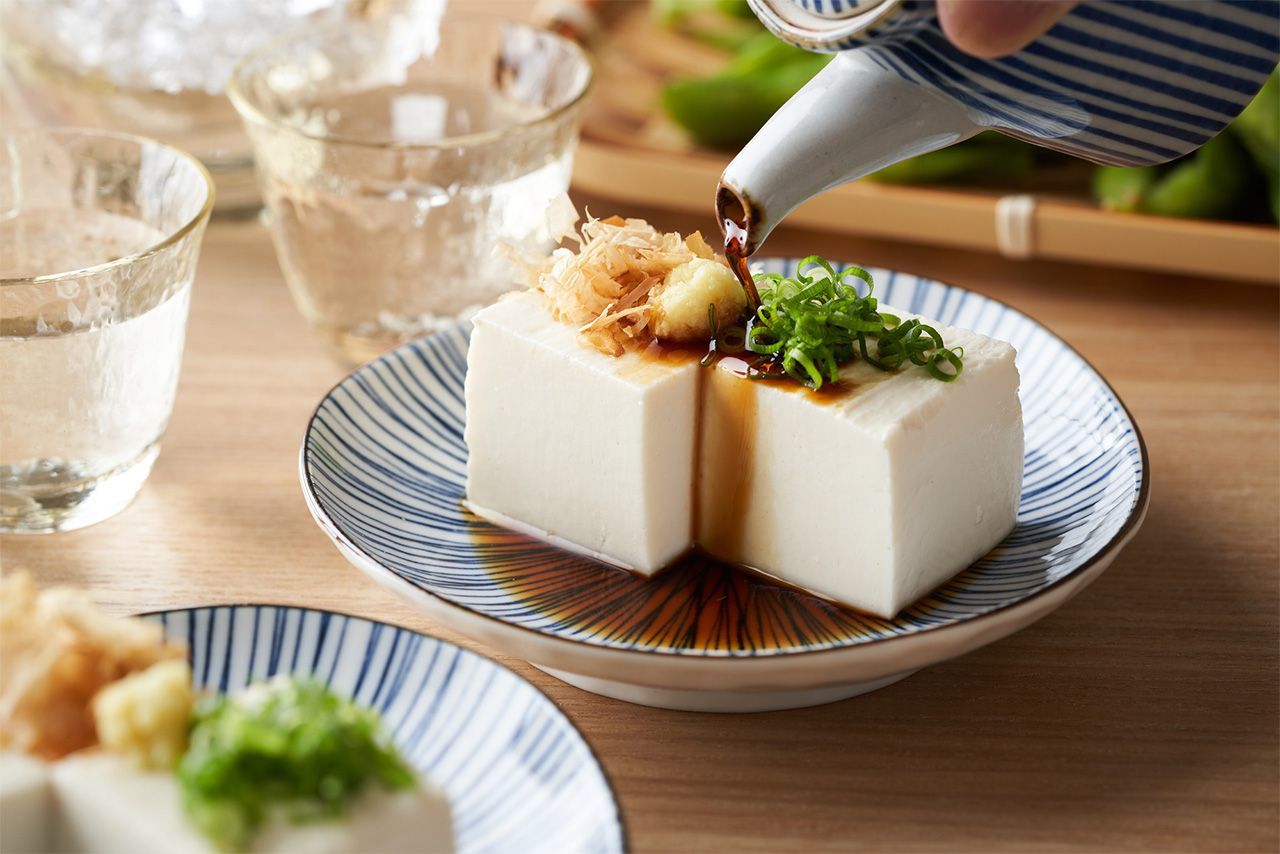
Hiyayakko (Chilled tōfu). (© Pixta)
Ginkgo Nuts
The leaves of the ginkgo turn yellow in autumn and the tree drops its mature nuts. Ginkgo nuts are soft and slightly bitter. They are peeled and then roasted, boiled, steamed with rice, or cooked in chawanmushi (a steamed savory custard made of egg and dashi) but their distinctive smell is off-putting for some people. Eating an excess of the nuts can cause indigestion, so the recommended daily maximum for an adult to consume is 10.

Ginkgo-lined avenue (left); roasted ginkgo nuts. (© Pixta)
Peanuts
Peanuts were brought to Japan via China and so are sometimes called “Nanking beans” (nankinmame). They are commonly dried, roasted and then salted, although recently peanuts boiled in salt have also become popular. In Japan, Chiba Prefecture is well known for growing peanuts.

Freshly harvested peanuts (left), peanuts. (© Pixta)
Sanma (Pacific Saury)
Sanma or Pacific saury is a long, thin fish, written with kanji representing “autumn,” “sword,” and “fish” (秋刀魚). They are fattiest, and therefore tastier, in autumn and, as they were once relatively inexpensive, they were often eaten by commoners. The fish is also highly nutritious, which explains the idiom “When sanma (saury) appears, anma (shiatsu masseurs) disappear.” It is often served salted and grilled, but with modern advancements in refrigeration and freezing, it is becoming more common as sashimi. In recent years, however, the fish is becoming increasingly scarce, with prices rising correspondingly.
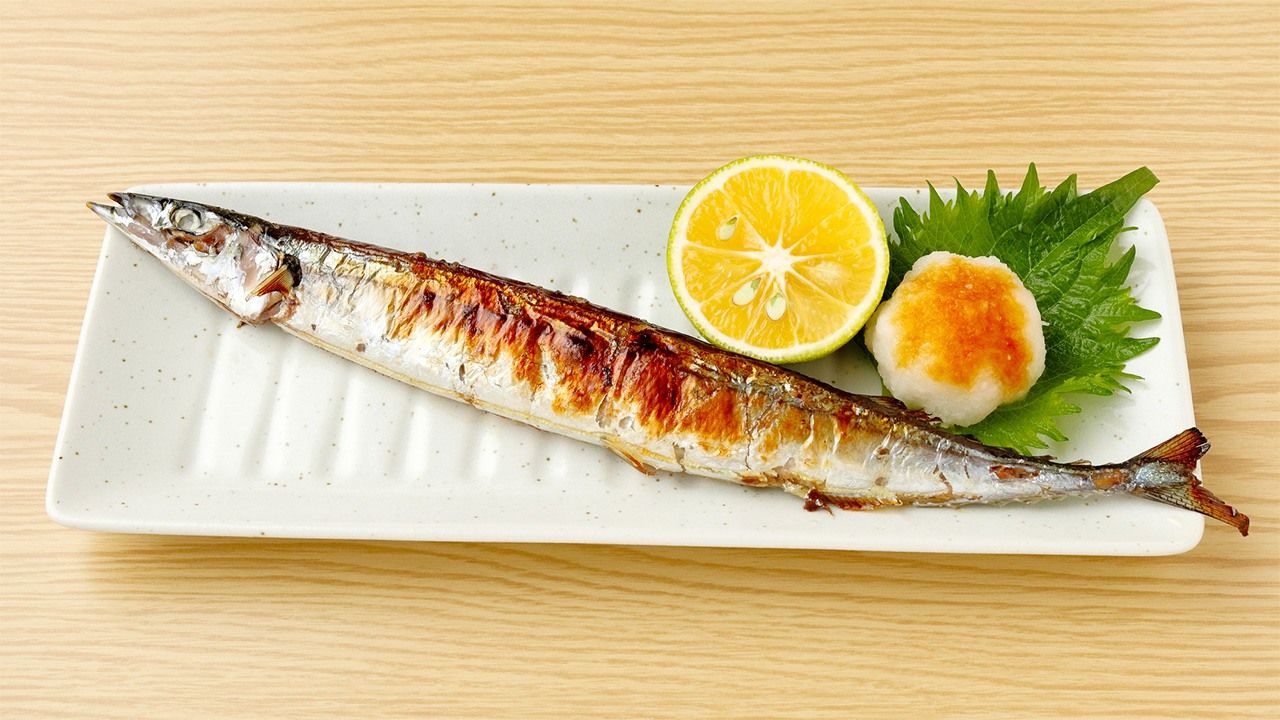
Salt-grilled sanma (Pacific saury). (© Pixta)
(Supervised by Inoue Shōei, calendar researcher and author, Shintō minister, and guest lecturer at Tōhoku Fukushi University. Banner photo: Red spider lilies in bloom around the Ōyama Senmaida terraced rice fields of Kamogawa, Chiba Prefecture. © Pixta.)
